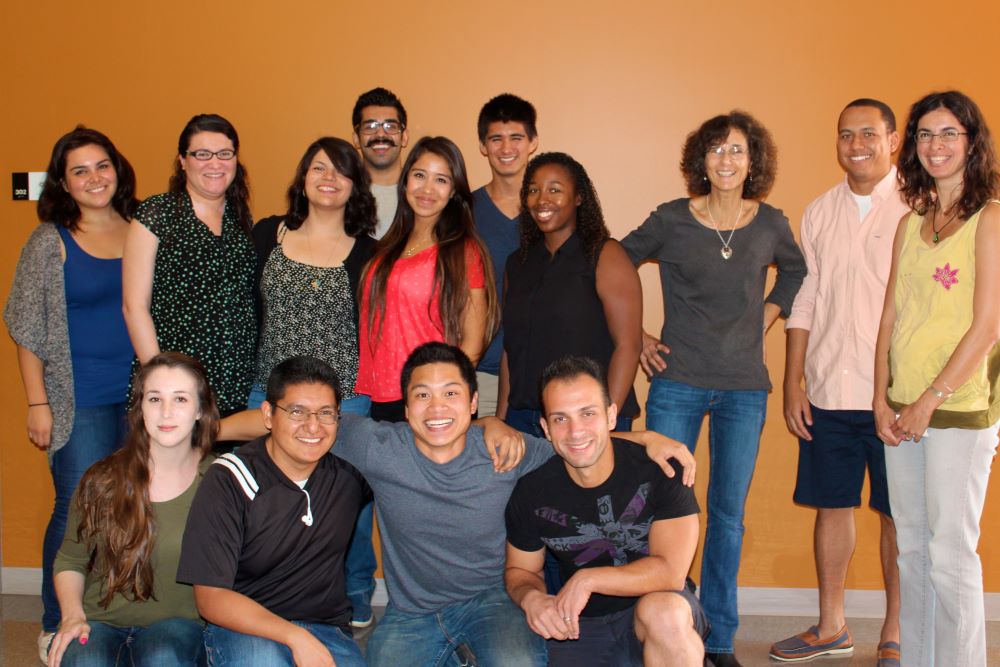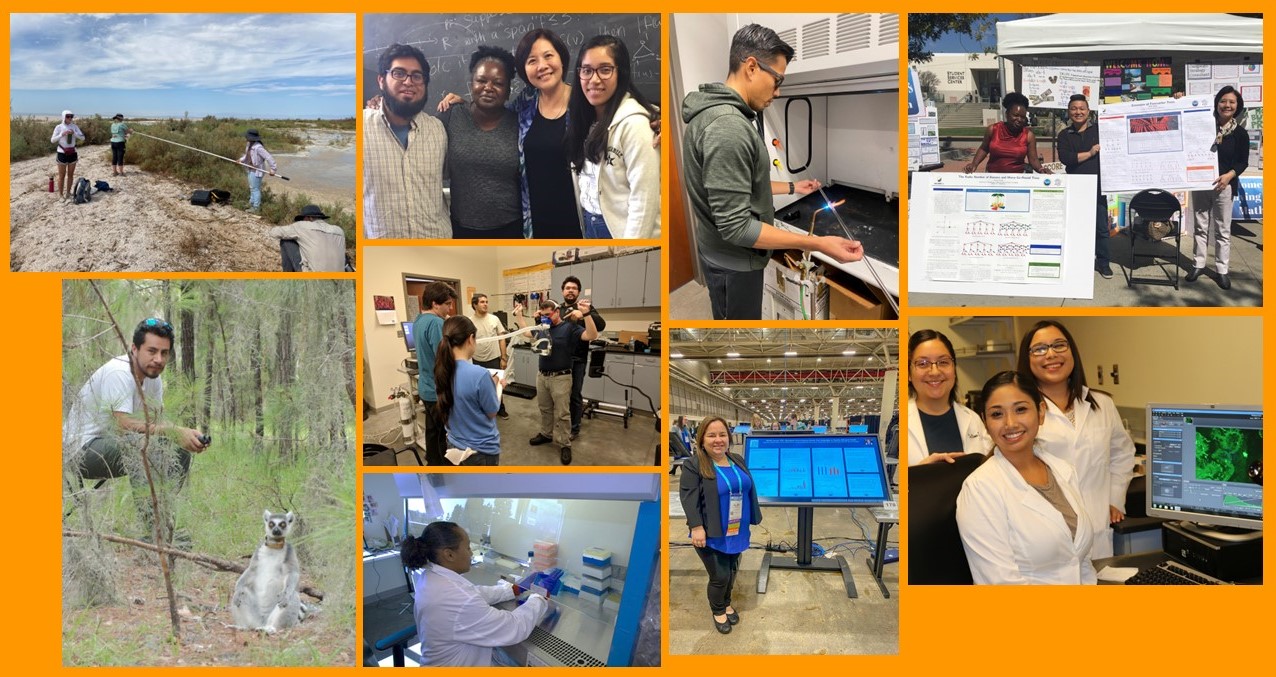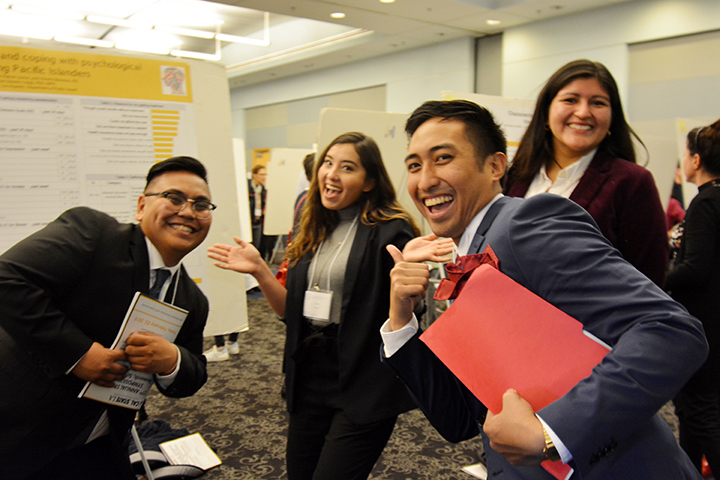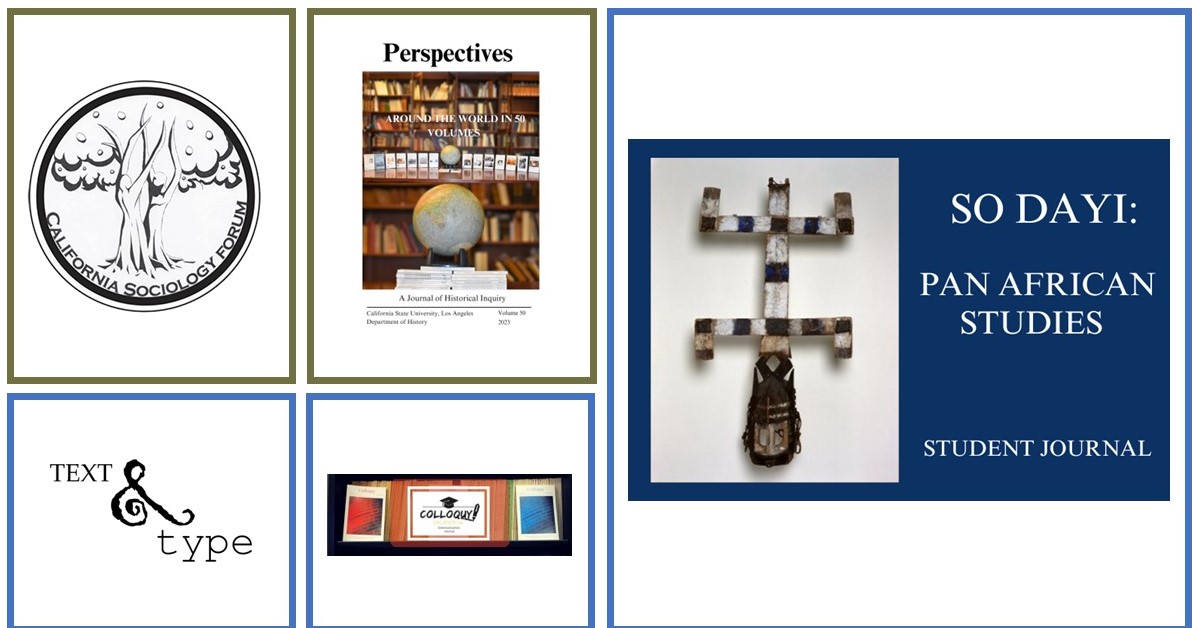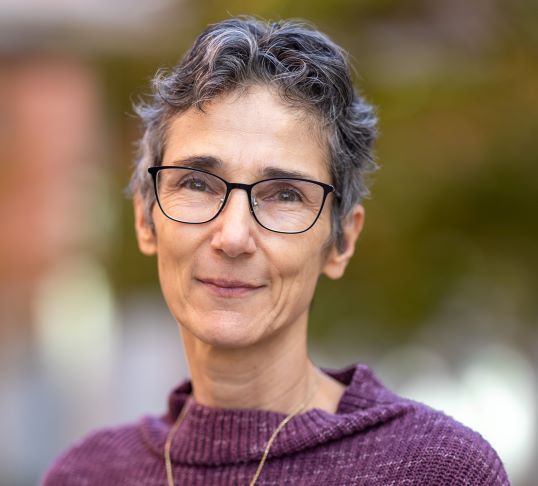Research is vital to the mission of Cal State LA and undergraduate research plays an important role. Undergraduate research is a high-impact activity that empowers the student and contributes to new knowledge. The Cal State LA Undergraduate Research Hub serves as a resource and springboard for undergraduate students at all levels of their research journey.
Summer Research Program Application Process - Overview Session
The Undergraduate Research Hub offers a one hour zoom session on how to prepare for a summer research application on Friday January 2026, from 11 am to 12:00 pm and from 1:00 pm to 2:00 pm. Topics will include:
- What are summer research programs
- How can you find summer research programs
- Elements of an application
- How to structure your statements
- Resume and curriculum vitae
- How to ask faculty for letters of recommendations
Sign up for the one hour zoom session here
If you would like to have more assistance in developing a strong summer research application package, you might want to consider enrolling in BIOL 3990 Preparation for Scientific Research this Winter. This 1-unit activity hybrid course will give you in deeper insight and provide peer-review and instructor-review of your application materials. This course will run from January 5 - January 16.
Please contact the BIOL 3990 instructor for more information if you are interested.
Explore Research
There are many ways to define research, but all definitions have in common that research is a systematic investigation that leads to new knowledge. That kind of investigation involves searching and re-searching.
There are many benefits to doing research as an undergraduate student. In addition to deepening your knowledge about a topic and benefiting your coursework, undergraduate research will help you...
- establish a new community bound by a love of discovery
- form long-term relationships with your faculty and research peer mentors that will positively impact your career
- learn new concepts and techniques
- contribute to new knowledge that will benefit society
- expand your professional network through conference presentations
- become better prepared for graduate research in master’s and doctoral programs
- develop leadership skills as mentor of other students.
Last not least: research is exciting and a lot of fun!
The fact you are reading this already suggests “Yes, research could be for you!”
Many important aspects of a successful researcher are also found in other parts of life. Creativity, curiosity, resilience, enjoying troubleshooting, patience, interest in finding out why things happen and in finding macro or micro solutions to world problems even if only on a small scale. If any of these apply to you then you might be already a researcher in the making. The best way to discover if research is for you is to do it. And by the way- research does not only happen in a laboratory but also outdoors, in the field, under the sea, in space, in zoos, in your community, in schools, in libraries, and just about anywhere.
Explore faculty and their research projects here.
There are many ways to begin your research journey.
- Connect with student active in research.
- Join a student club in your field of interest.
- Attend the Annual Cal State LA symposium for Research, Scholarship, and Creative Activities.
- Take a course that introduces research.
- Reach out to faculty doing research on campus.
- Explore research-focused programs and centers on campus.
- Apply for summer research programs off-campus.
There are other forms of extracurricular engagement than research that provide you with an opportunity for intellectual growth and professional development. You can interact with faculty and staff and the community in your field. Below are several such centers listed.
| Field | Center |
|---|---|
| Arts and Letters | Center for Contemporary Poetry and Poetics |
| Centers for the Study of Genders and Sexualities | |
| Business and Economics | Center for Entrepreneurship |
| Human and Health Services | The Mobility Center |
| The Hertzberg-Davis Forensic Science Center |
Find Research Support
Cal State LA hosts several research training programs of which many prepare students for entering a PhD program. Trainees are exposed to professional development and various career paths, attend seminars in their discipline, and interact with professionals in their field. Often trainees conduct faculty-mentored research and may receive a stipend and/or tuition support.
Explore research training programs at Cal State LA
There are also many private foundations and professional societies that support undergraduate research. Typically, support is for students who work with a faculty mentor on a specific project and applications can be submitted in collaboration with the faculty mentor. Ask your faculty mentor about such opportunities.
Current Opportunities:
The Sacramento State's Japanese American Archival Collection (JAAC) is offering a 2026-2027 undergraduate research travel grant (URTG) for undergrads in the CSU and UC systems to perform archival research in their vast Japanese American Archival Collection. Deadline to apply is November 7, 2025. Find out more here.
The library has many resources to support students in conducting research such as finding relevant literature, reading the literature, and appropriately citing the literature.
The library has also a team of librarians ready to help you with all library needs.
Share Your Research
Research findings can be shared in many ways at many levels including, however not limited to: shared among research group members, between lab groups, at conferences ranging from local on-campus to international conferences; in forms of informal conversations, as an oral presentation with a poster or a slide show, and in written form as an article or book entry.
When planning to publish in journals dedicated to undergraduate research, you should consider a few things. It is a great outlet for scientific writing, increases competitiveness for graduate programs, and prepares for writing at the graduate level. However, student journals might not be indexed and discoverable and the faculty research mentor might be more interested in discipline specific journals.
Discuss with your research mentor in which way you should share your research. Here, we show some venues specifically geared toward student presentations and publications.
ON CAMPUS
- Student Symposium on Research, Scholarship, and Creative Activities (RSCA) 2026 date to be announced
- Center for the Study of Genders and Sexualities--check their website for updates on their annual student research conference
SOUTHERN CALIFORNIA
- West Coast Biological Sciences Undergraduate Research Conference (WCBSURC)-- 2026 dates and location to be announced
- Southern California Conference for Undergraduate Research (SCCUR) Saturday, November 22, 2025, California State University Channel Islands
CALIFORNIA
NATIONAL
- National Conference on Undergraduate Research (NCUR) - April 13- 15, 2026, Richmond, VA
- Society for the Advancement of Chicanos and Native Americans in Science (SACNAS)- October 30 - November 1, 2025, Columbus, OH
- Annual Biomedical Research Conference for Minoritized Scientists (ABRCMS) - November 19-22, 2025, San Antonio, TX
- Emerging Researchers National (ERN) Conference in STEM - 2026 date(s) and location to be announced
- Department of Communication Studies- Colloqy
A journal of the Department of Communication Studies at Cal State LA publishing a variety of scholarship of different types and at different levels. - Department of English- Text & Type
An open-access journal of the Department of English that features critical, creative, and multimedia writing projects. - Department of History- Perspectives
A yearly print and electronic publication of the Department of History managed by students from HIST 4970 students and featuring primary research in history. - Department of Pan African Studies- So Dayi
A journal published by the Department of Pan-African Studies featuring student research in the area of Pan-African Studies. - Department of Philosophy- Philosophy in Practice (archived issues)
An open-access journal that has previously published student research in the area of philosophy but is currently inactive. - Department of Sociology: California Sociology Forum
A student-run journal committed to cultivating student research, supporting intellectual exchange, and featuring diverse perspectives on various issues of our society and world. - Literature and Art in General- Statement Magazine
A student-run journal of literature and art that is currently inactive.
WEBSITES WITH UNDERGRADUATE RESEARCH JOURNAL LISTS
- University of Nebraska Lincoln
- Scared Heart University Library
- Undergraduate Research Commons
- Wikipedia
SELECTED UNDERGRADUATE RESEARCH JOURNAL
| Field | Journal | ISSN | Open Access | Indexed |
|---|---|---|---|---|
| Multidisciplinary | American Journal of Undergraduate Research | 2375-8732 | Yes | |
| Butler Journal of Undergraduate Research | None | |||
| Discussions: the Undergraduate Research Journal of CWRU | None | |||
| Journal of Undergraduate Research & Scholarly Excellence | 2156-5309 | |||
| Midwest Journal of Undergraduate Research | 2160-9357 | |||
| Reinvention: An International Journal of Undergraduate Research | 1755-7429 | Yes | ||
| The Journal of Young Investigators | 1539-4026 | |||
| Journal of Student Research | 2167-1907 | Yes | Yes | |
| Mathematics | Involve- a journal of mathematics | 1944-4184 | Yes | Yes |
| The Rose-Hulman Undergraduate Mathematics Journal | None | |||
| Sciences | The Dartmouth Undergraduate Journal of Science | 2167-7891 | Yes | |
| EvoS Journal: The Journal of the Evolutionary Studies Consortium | 1944-1932 | Yes | ||
| Social Sciences, Arts & Humanities | INQUIRIES Journal | 2153-5760 | Yes |
Contact Information
- Edith Porter, M.D
- Faculty Undergraduate Research Liaison
- [email protected]
Drop-in Zoom Office Hours: Thursdays, 11:00 am - 12:00 pm
